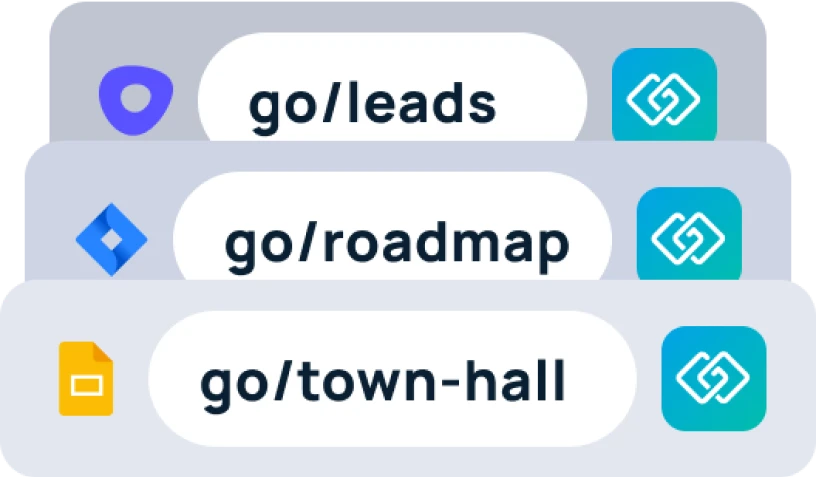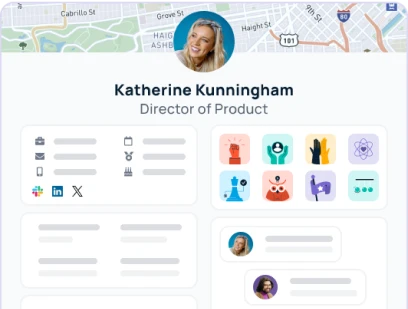Without great systems in place for knowledge sharing, knowledge workers can’t get much done. Especially in remote work environments where employees have to work asynchronously, it can be hard for them to always get access to what they need.
On the other hand, when knowledge sharing processes are working well, employees can easily access historical data, improve decision-making, and get their work done faster.
Companies that want to scale their workforce and their revenue must have effective knowledge sharing solutions set up. In this post, we dive into top knowledge sharing tools and techniques to help you create a workplace culture of transparency and efficiency.
What is knowledge sharing?
Knowledge sharing is when information is transferred between people within an organization.
It sounds simple enough, but it’s not. 60% of employees say that it is either difficult, very difficult, or impossible to get the information they need from their colleagues in order to do their job.
As companies grow, knowledge sharing gets even more complicated. With the average turnover in the US at around 17%, knowledge that is not well preserved and shared may leave company doors along with the employee.

The top challenges with knowledge sharing
81% of workers feel that unique knowledge is the hardest to replace. To be clear, the biggest challenge with knowledge sharing is transferring company-specific knowledge and data that can’t be found elsewhere. We’re talking things that aren’t just a Google search away.
The problems with knowledge sharing aren’t easy to fix. They include technology and human productivity issues.
However, at the end of the day, all of these complex issues fall into two main categories:
- Lack of knowledge sharing systems in place — There are no clear processes for how employees are supposed to log and store information. Or the approved knowledge sharing methods and software are ineffective.
- Lack of adoption of knowledge sharing systems — Employees either don’t know about the internal knowledge sharing methods they’re supposed to be using. Or they know they exist but still don’t use them either because they don’t agree with the methods, don’t value them, or something else.

Solving these issues gives your company advantages over competitors who lose knowledge and speed with every new turnover. Below we’ll look into some best practices and tools that can help.
Building a culture of effective knowledge sharing
Only 20% of companies believe their knowledge-sharing efforts are effective.
Companies that foster transparency, communication, and collaboration between employees will likely have an easier time adopting knowledge sharing procedures and technology because their staff is already accustomed to transferring knowledge between individuals.
For companies that don’t have that sort of collaboration, they’ll need to incentivize their employees using methods other than just easing the burden of turnover. You could tap into your employees’ desire to stop working in silos, share knowledge between departments, be more data-driven, and learn from each other’s experiences.
Work with People Ops and company culture advocates to determine which incentives will motivate your team to follow through and use the procedures and tools you want them to use in order to make sure that knowledge is not only retained but readily available.
It’s about more than storing information. A culture of knowledge sharing fosters employee willingness to collaborate and help each other.

Knowledge sharing tools and techniques
There are no quick fixes for setting up effective knowledge sharing. Most organizations will need many or all of the following methods.
1. Proprietary online training
Employees can’t search the internet to learn everything about your company, your products, your differentiators, and your roadmap. That’s why the world’s top organizations create proprietary training programs for their entire staff and for specific departments.
Tool recommendations:
- Lessonly — LMS for onboarding and ongoing training as well as practice sessions for sales and customer service representatives
- Eloomi — Onboarding, content, and training alongside performance review and employee engagement boosting features
2. AI-powered decision making
AI has the ability to take company and market insights and deliver it to employees very quickly.
New employees don’t have the experience to help them make decisions. This is especially true when it comes to SDRs, who are usually in their job for just 8 or 9 months before moving on to other roles in sales. They need AI-powered tools to help them know which target accounts to devote most of their time to.
Of course, the use cases for AI are endless and stretch to other roles and experience levels as well. There are industry-specific AI platforms as well, but below are examples that work for many different industries.
Tool recommendations:
- Faraday — Platform for AI-driven predictions and decisions, catered for B2C growth
- Element AI Knowledge Scout — AI decision-making platform that works well for tech and software companies
3. Link management
Every week, knowledge workers visit hundreds of web pages to do their work. The most important URLs are often the longest and messiest. Employees are expected to self-manage these resources through bookmarks, which are ineffective and unscalable. Meanwhile, link management platforms can help employees gain access to important pages faster, and some even scale across the organization.
Tool recommendations:
- Go Links — Enterprise-ready platform for secure short links that are intuitive and easy to remember so teams can find what they’re looking for quickly
- Workona — Link management dashboard for information workers who want to keep tabs on their tabs
4. Project management software
Before, during, and after a project, project management software can help team members stay on the same page and exchange information. With individual task cards, it’s easy to find all relevant files and data related to a specific project.
Tool recommendations:
- Asana — Task management tool favored by marketing teams and smaller companies
- Jira — Project management software typically used by software engineers, and tech companies that want to keep every team and department on the same tool
- Clickup — Project management tool with chat, spreadsheets, docs, and more features included
5. Meetings and verbal knowledge sharing
Though asynchronous communication is still on the rise, there will always be the need for meetings: sales calls, team meetings, project meetings, standups, etc. With these tools, you can schedule, manage, and store meetings.
Tool recommendations:
- Zoom — Web conferencing and webinar software for teams large and small
- Wingman — Built for sales teams, this platform offers conversation intelligence and call feedback
- Panopto — Platform for a variety of video needs including video hosting and management, live streaming, and video search
- Tandem — Video or voice chat with coworkers instantly when both parties are available, no waiting, no meeting requests
6. Chat platforms
The importance of avoiding lengthy email threads can’t be overstated. Chat is the most effective when organized into channels where important files can be shared and later discovered. The benefits of chat platforms can turn into negatives when everyone is expected to be available at all times, however, so make sure your team knows it’s okay to not always be responsive.
Tool recommendations:
- Slack — Chat and communication platform with voice and video calling, file sharing, and useful integrations
- Microsoft Teams — Group chat software that offers meetings and collaboration features while integrating with other Microsoft programs
7. Digital asset management
Files can definitely get lost in Slack channels, email threads, and old task management software. That’s why a digital asset management system with tags and searchable key phrases is essential for big companies. Employees need to be able to search and find the assets they need quickly.
Tool recommendations:
- Box — Digital asset management system for all sorts of files, with permissions, searching, and tagging
- Canto — Platform primarily intended for storing and sharing brand assets
- Aprimo — digital asset management and work management for digital teams
8. Standard operating procedures and project documentation
Processes need to be documented so that they can be repeated. Regardless of the role or department, there are some processes that don’t need to be creatively reinvented but can actually stay the same for several months or even a few years. These tools can help you create and share SOPs that will get followed.
Tool recommendations:
- Process Street — process and workflow management with process templates, checklists, and progress tracking
- Trainual — robust platform with onboarding, training, processes, policies, SOPs, wiki, and playbooks
- Notion — all-in-one workspace that lets you include SOPs and project documentation alongside task management
9. Screen recordings
Sometimes, a video meeting isn’t necessary, but written communication like an email or chat message doesn’t suffice. In those moments, screen recordings can help. Employees can create and share short video content internally on a 1:1 basis and also add them to SOPs, project documentation, etc.
Tool recommendations:
- Loom — quick and easy tool for sharing screen recordings for training, tasks, and feedback
- Vidyard — screen recording tool great for connecting remote employees together and for sales and marketing purposes
10. Shared digital whiteboards
Whiteboards are a great way to keep brainstorming and visual work on track. They can also be used to create visual representations of processes and requirements.
Tool recommendations:
- Miro — online whiteboard platform with canvases that can be used for everything from mind maps to wireframes
- Sketchboard — collaborative online whiteboard for sketching UX flows, delivering presentations, and more
Start Improving Your Knowledge Management
Whether you implement one or many of these tools, begin creating an environment of knowledge sharing at your company to ensure that everyone can work faster, smarter, and more productively.
Add to your company’s knowledge-sharing culture today with Go Links.









